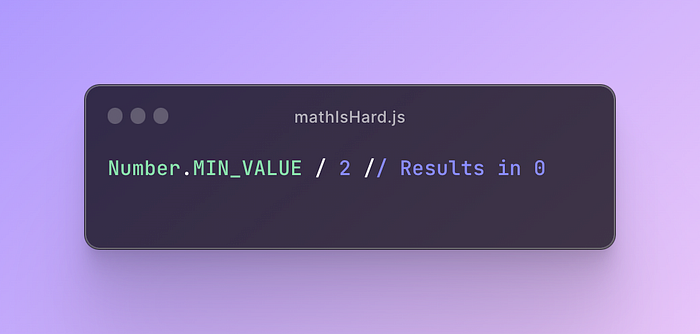Math is Hard in JavaScript: Floating-Point Precision in JavaScript
Demystifying the Intricacies of JavaScript’s Number Handling: A Guide to Floating-Point Precision and Pitfalls
JavaScript, the backbone of web development, is ubiquitous in creating interactive and dynamic web applications. However, its handling of numbers, particularly floating-point arithmetic, can often be a source of confusion and bugs. This article delves into the common errors encountered in JavaScript’s floating-point arithmetic, providing examples to illustrate these quirks and offering insight into their underlying causes.
Understanding the Basics: IEEE 754 Standard
At the heart of these issues is JavaScript’s adherence to the IEEE 754 standard for floating-point arithmetic. This standard, while providing a consistent approach for number representation across various programming languages, introduces several limitations when dealing with decimal numbers.
Rounding Errors: The Most Common Culprit
One of the most frequent sources of frustration is rounding errors. These occur because certain decimal fractions can’t be represented precisely in binary form. For instance:

Here, the precision loss results in an inaccurate representation of the number.
Overflow and Underflow: The Extremes
Arithmetic operations can sometimes result in numbers exceeding the range that JavaScript can represent, leading to overflow or underflow:
Overflow: Occurs when a calculation exceeds the largest representable number.

Underflow: Happens when a result is closer to zero than the smallest representable number.

NaN Errors: Undefined Operations
Certain operations don’t yield meaningful numeric results, resulting in NaN (Not a Number):

Understanding when and why NaN occurs is crucial for debugging and handling exceptions in your code.
Loss of Significance: The Subtle Thief
Subtracting two nearly equal numbers can lead to a loss of significance, where important digits are lost, and the result is less accurate than expected:

Associative Law: A Broken Rule in Floating-Point Arithmetic
In mathematics, the associative law states that the order of operations does not affect the result. However, this law does not always hold in JavaScript’s floating-point arithmetic:

Navigating the Quirks: Strategies for Developers
Understanding these quirks is essential for developers, especially in precision-critical applications. Employing strategies like using integer-based calculations for financial figures, leveraging external libraries for high-precision arithmetic, or incorporating robust error-checking mechanisms can mitigate these issues.
Conclusion
While JavaScript’s floating-point arithmetic can be a source of unexpected behavior, a deeper understanding of its limitations and peculiarities empowers developers to write more reliable and accurate code. By recognizing and accounting for these quirks, developers can avo
